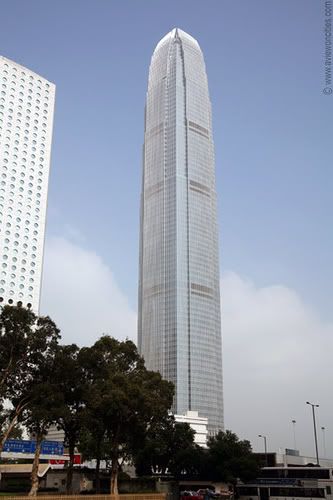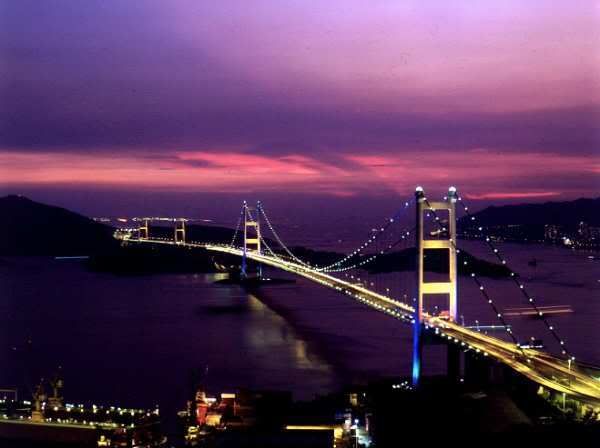I visited Hong Kong for the first time in 1995 when the territory’s sovereignty hadn’t yet been transferred to the People’s Republic of China. At that time the Kai Tak airport was cramped and narrow, perched on the edge of the sea in Kowloon Peninsula. It resembled Nha Trang airport (VietNam) before it was moved to Cam Ranh. But Kai Tak airport was considerably more dangerous.
It was said that only experienced pilots could planes to Hong Kong, because Kai Tak airport was located in such dangerous terrain. To one side was sea and high buildings. On the other side the runway was very short. One story ran that a pilot, when landing at the Kai Tak airport, could see families sitting down at their tables for the eight o’clock dinner. Local people living around the airport could watch the pilot talking to a beautiful air hostess as he came in to land. Whether you believe this story or not is up to you, but it is one of the current urban legends relating to Hong Kong’s recent past.

The skyscrapers of The Two International Centre
The last time I came to Hong Kong was in mid-July 2007, after the 10th anniversary of the handover of the territory to the People’s Republic of China. The new Hong Kong airport is very modern with an attractive architectural style. This differs from the international airport in Malaysia, which is modern but architecturally unimpressive. When we arrived in Hong Kong, the weather was boiling hot. While still on the plane, tourists coming to Hong Kong for the first time were surprised by the skyscrapers leaning forward on the mountains, overlooking the sea on a hot July morning.

Tsing Ma Bridge
From the airport we went straight by car to the centre of the city, passing over Tsing Ma bridge, which is over 2 km long. This is the longest suspension bridge in the world and was the pride of Hong Kong in the past. We drove past the Container harbour, which has the reputation of being the busiest harbour in the world – busier than Rotterdam harbour in Holland, Singapore or Kobe harbour in Japan. Hong Kong is really noisy and heavily populated. It covers an area of more than 1,120 square km, consisting of 260 islands of all shapes and sizes, in which Hong Kong island is the largest. There are many European people living here.

Tsing Ma Bridge
Of the total area, 70% consists of hills and mountains and 30% is residential land housing nearly 7 million people amid a powerful and still fast-developing economy. Most people live in apartment blocks built over 30 years ago. These stand next to more modern newly-built buildings. In Hong Kong about 95% of the population are Cantonese Chinese. They are famous for the food specialties they have brought from the south of China. The rest of the population are foreigners from European countries, most of them British. There are also Vietnamese people here.
We stayed in Tsim Sha Tsui in the Kowloon peninsula, where there are many hotels and churches built in the British architectural style. The noisiest place is the trading and living area of the Chinese in Hong Kong. Shops, restaurants, Internet cafes and night markets stretch from Tsim Sha Tsui to Jordan, Yau Ma Tei and Mongkok. Hordes of tourists are attracted by the Ladies market and Temples market, where various kinds of goods are displayed on the pavements. After the British won the Opium war in the 1840s, Kowloon peninsula and the New Territories were ceded to Britain for 99 years.

Hong Kong Disneyland
For me, Hong Kong is no longer as noisy as it was in the past, though Disneyland was built 2 years ago and has attracted a great number of new international and regional tourists including Vietnamese. They take the entire family with them to the park. There are many amusement activities and performances on indoor and outdoor stages. Children especially like to come here because they can meet Donald Duck and Golden Mickey Mouse – famous cartoons characters.

Besides Disneyland, there’s also the ocean Park in Hong Kong. In my opinion, Hong Kong is the best place to locate an Ocean Park, because it is a suitable destination for both adults and children. Visitors coming here at weekends are mostly Hong Kong locals. In the Ocean Park, you will experience the exhilaration of sitting in a cable car being winched past the stunning sea and mountains. Sometimes the car has to stop and hangs stationary in mid air because of the strong winds. I like the Middle Kingdom most where you can take photos in the film studios. They remind me of the historic period dramas of TVB Hong Kong, which were so popular with the Vietnamese about 10 years ago.
In the underground or subway system I felt a little afraid in the cool depths, even though there are lights and many people about. Because of this, despite working as a tour guide, I rarely go down the Cu Chi tunnels with tourists. Sometimes when I take business trips overseas, I have to choose between the underground and the tram – whichever suits my pocket. Using the underground in Hong Kong is, for me, the easiest in the world. Not like using the Mass Rapid Transit (MRT) subway system in Singapore! There are many underground routes in Hong Kong to serve the Hong Kong population. Most tourists know how to use the underground.
The bustle and energy of Hong Kong brings us exhilarating moments and leaves us with unforgettable experiences. I hope to return to Hong Kong one day.
Article: Pham Tan Duc (Travellive)
Read more:Tips for Travel with ChildrenStrange custom and regulations of the destination may spoil your trip. What are they?Tips for old travelersWhat you need in your luggage before travel?


















